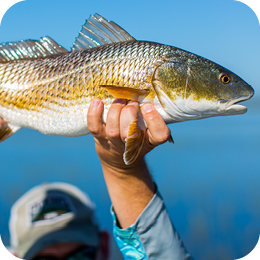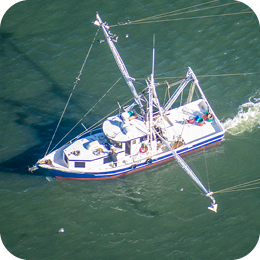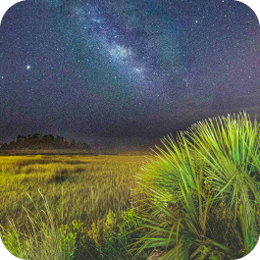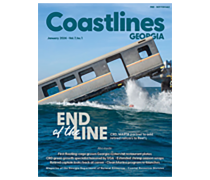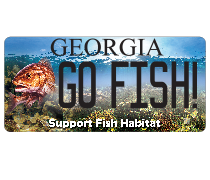This serves as notification from the Shore Protection Committee and the Georgia Department of Natural Resources of a request from Sea Island Acquisition, LLC for a Shore Protection Act (SPA) permit under Official Code of Georgia (O.C.G.A.) 12-5-230 et. seq. to conduct shoreline engineering activities to nourish, restore, and manage the beach at Sea Island, Glynn County, Georgia.
The applicant has a state-approved Sand Management Program on the east side of Sea Island that consists of an existing north and south groin. SPA Permit #149, issued on January 24, 1986, allows for the management of beach quality sand within the existing groins.
On December 11, 2015, SIA was issued SPA permit #438 for the construction and maintenance of a groin, beach nourishment, and dune creation on the southern end of Sea Island. The shoreline engineering activities authorized by SPA Permit #438 have not been constructed or conducted at this time.
The applicant’s proposed nourishment plan is inclusive of the placement of a minimum of 1,315,000 cubic yards (cy) of beach-quality sediment placed along the Sea Island shoreline; construction of an artificial dune; and a borrow area. All work would be performed outside of the prescribed turtle nesting season (i.e. - construction between November 1st and April 30th), unless necessary due to emergencies caused by passing storms or for preventative measures for approaching storms.
The proposed nourishment encompasses four reaches: Reach “1” begins 1,200 linear feet (lf) south of the existing south groin (The Reserve, authorized under SPA permit #438); Reach “A” extends from the south groin on Sea Island approximately 4,000 lf north to near East 9th Street; Reach “B” extends 9,000 lf north from approximately East 9th Street to East 34th Street; and Reach “C” extends 3,000 lf north from East 34th Street to the north groin. Sand will be obtained from an offshore borrow area within Georgia state waters, located approximately 4 miles east/southeast of Sea Island, with dimensions of approximately 10,000 lf by 1,700 lf (~255 acres). Nourishment sand will be pumped to the beach, shaped, and graded to slopes and elevations similar to the existing beach.
The goal of the proposed nourishment is to restore a continuous dry-sand beach between existing groins and to supplement the volume with sufficient material to perform sand transfers (recycling) within the project area after hydraulic nourishment is complete. Sand transfers would be performed via land-based equipment and will include transfers as needed from Reach “A” and Reach “C” to affected portions of the project area to maintain a continuous dry-sand beach. This work would be consistent with previously authorized beach management recycling work performed by the applicant following the 1990 and 1997 nourishment projects.
A quantity of sand necessary to carry out construction of the Reserve project (authorized in SPA permit #438) and repair recent hurricane damage is included in Reach A volumes. Depending on the final construction schedule, the sand required for the Reserve project (Reach 1) would be placed either directly by the dredge operation, or by mechanical transfer from Reach A.
The proposed nourishment will be accomplished by hydraulic dredge (cutterhead suction dredge), pipelines to the beach, and heavy equipment (bulldozers and loaders) shaping the fill on the beach. The final nourishment volume will depend on the bids for construction and the budget available. The minimum-scale project will be 1,315,000 cubic yards (cy) and the maximum scale will be 2,500,000 cy. The applicant anticipates the final project will be close to the minimum scale project, but future erosion events could require additional dredging operations over the life of the permit.
Temporary sand-training dikes will be used to contain the slurry discharge parallel to the shore. Once the sand is pumped onto the beach, bulldozers will shape the fill into the design template from the backshore to the approximate mean sea-level (MSL) contour. Sand below MSL will be shaped and redistributed to a natural profile by waves. Sand fencing and native vegetation will be installed in strategic locations along a proposed dune following nourishment, in accordance with DNR standards for sand fencing and a DNR-approved vegetation plan. The principal nourishment sections will consist of a nearly horizontal berm at +7 ft NAVD. Berm widths will vary according to fill density. The seaward slope will be initially constructed at 1 on 25, then will adjust naturally to waves and tides.
The proposed nourishment plan incorporates an artificial dune along up to 10,000 lf between stations 135+00 and 235+00. The dune will toe into the seaward crest of the existing rock revetment and will be no higher than +12 ft NAVD with a crest width of 15-20 ft. The seaward dune slope will be 1 on 4 or gentler, merging with the constructed berm at +7 ft NAVD. Sand fencing and native dune grasses will be installed along the artificial dune soon after completion of nourishment following GADNR specifications and guidance. The alongshore limits of the dune will be determined based on conditions at the time of construction. The applicant’s goal is to re-establish a continuous dune along Reaches A, B, and C.
Maintenance and recycling would occur: up to once per year outside of turtle nesting season to maintain overall project purpose of storm protection, wildlife habitat, and recreation, upon notice to the GADNR and Savannah District U.S. Army Corps of Engineers (USACE); at any time to correct unusual erosion rates or to correct damage caused by discrete events upon notice to GADNR and USACE; in the event on an approaching storm, shaping of dunes to raise low-lying area for upland protection, upon notice to GADNR and USACE. Also in the event of an approaching storm, material for recycling would be obtained from any location above MLLW within Reach A and Reach C, and provided the material meets regulatory guidelines, could be placed within any reach based upon site conditions and needs relevant to maintain the overall project purpose of shoreline protection, wildlife habitat, and recreational use.
All work would be performed outside of the prescribed turtle nesting season (i.e. - construction between November 1st and April 30th), unless necessary due to emergencies caused by passing storms or for preventative measures for approaching storms. The timing and scale of non-emergency proposed sand transfers would depend on actual erosion rates and site-specific conditions. The applicant proposes to measure the rate of sand losses and gains by reach and to transfer sand according to the need to maintain the storm protection, wildlife habitat, and recreational values associated with the overall project purpose. The schedule and need for future sand transfers is expected to vary depending on the frequency and severity of erosion events.
The applicant completed confirmation borings for the proposed borrow area. Based on the sediment grain size and low-percent of mud in the sediments, the applicant delineated a 255-acre area inside the state 3-nautical-mile limit. The proposed borrow area was found to contain beach-quality sediments similar in texture and color to the existing beach sediments along Sea Island. The northeastern half of the proposed borrow area is proposed for excavations of 8 ft of substrate. The southwestern half is proposed for 4-6 ft cuts.
The applicant will establish and complete a monitoring plan inclusive of: beach surveys (topographic and bathymetric) before and after the project, and for five years post project; borrow area surveys (pre-project, post-project, and out-year bi-annual bathymetric surveys of the utilized dredge area for five years post-project); and sediment monitoring of the beach and borrow area. The sediment monitoring of the beach will include pre- and post-nourishment beach sediment samples at the same stations sampled before construction and for five years post-project. The sediment monitoring for the borrow area will include pre-project, post-project, and out-year surficial sediment samples obtained in the dredge areas for five years post-project to evaluate possible changes to the sediment characteristics over time as new sediment infills the borrow area.
The applicant seeks a specific finding by the SPC pursuant to O.C.G.A. 12-5-239(k)(2) that an emergency exists at the project site that warrants construction of the project as permitted by the Committee without waiting for termination of all administrative proceedings, in the event of a timely appeal of the permit. As stated by the applicant in the submitted application, erosion caused by Hurricanes Matthew and Irma has resulted in significant loss of sand from the beach at Sea Island, which threatens upland real property, structures, and shoreline engineering activities. To minimize impacts to sea turtles, the project as proposed would not commence until November 1st, but the applicant seeks the finding of an emergency and authorization from the Committee now, so that it can commence work on that date, even if there are administrative proceedings then pending.
It is the responsibility of the applicant to demonstrate that the project is not contrary to the public interest and that no feasible alternative sites exist. In passing upon the application for permit, the permit issuing authority shall consider the public interest which, for purposes of this part, shall be deemed to be the following considerations: (1) Whether or not unreasonably harmful, increased alteration of the dynamic dune field or submerged lands, or function of the sand-sharing system will be created; (2) Whether or not the granting of a permit and the completion of the applicant's proposal will unreasonably interfere with the conservation of marine life, wildlife, or other resources; and (3) Whether or not the granting of a permit and the completion of the applicant's proposal will unreasonably interfere with reasonable access by and recreational use and enjoyment of public properties impacted by the project.
Please provide this office with substantive, site-specific comments as to why the proposed work should or should not proceed. Comments and questions concerning this proposed project should be submitted in writing and be submitted by the close of business on June 17, 2018 to Jordan Dodson, Department of Natural Resources, One Conservation Way, Brunswick, Georgia 31520.
Click here for Project Application
Click here for Project Description
Click here for Project Drawings
Click here for Geotechnical Data Analysis
 An official website of the State of Georgia.
An official website of the State of Georgia.


